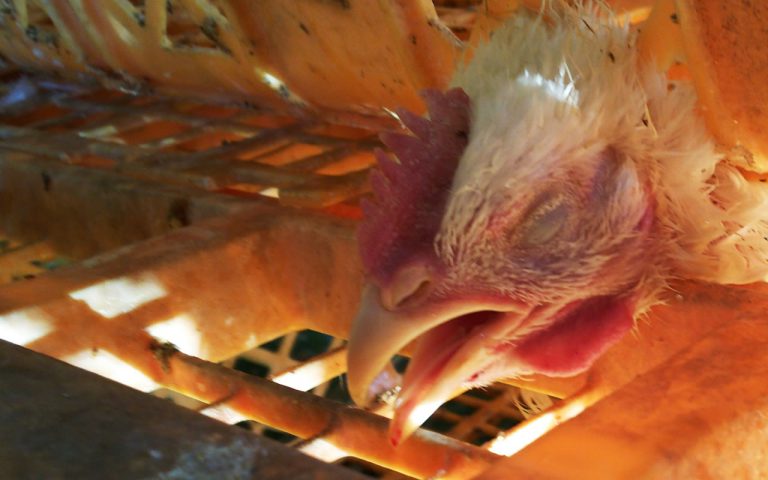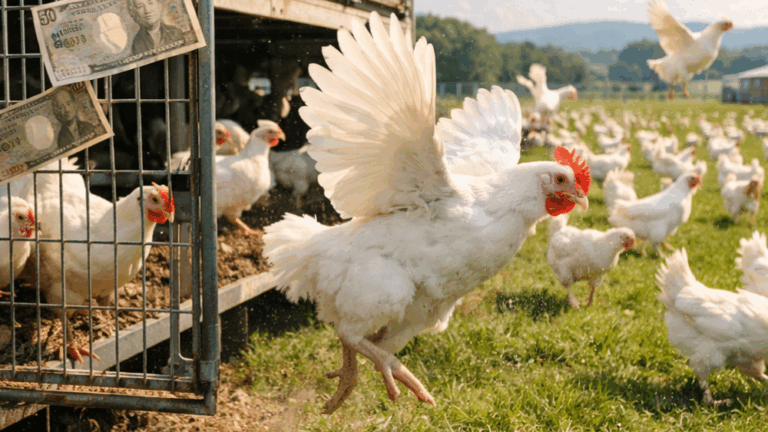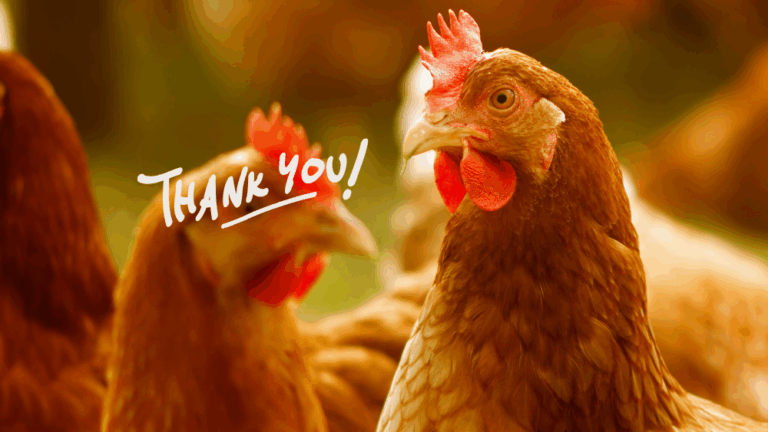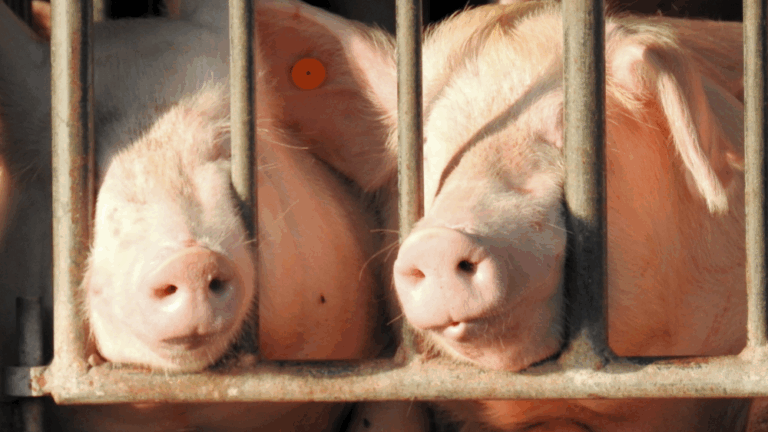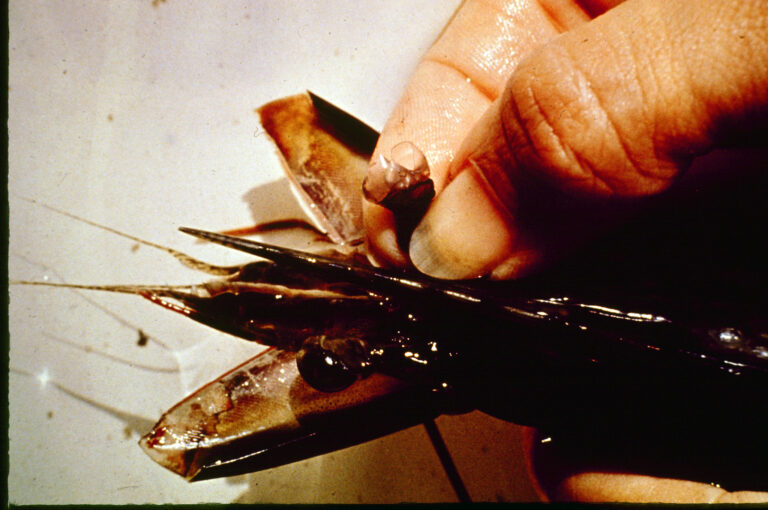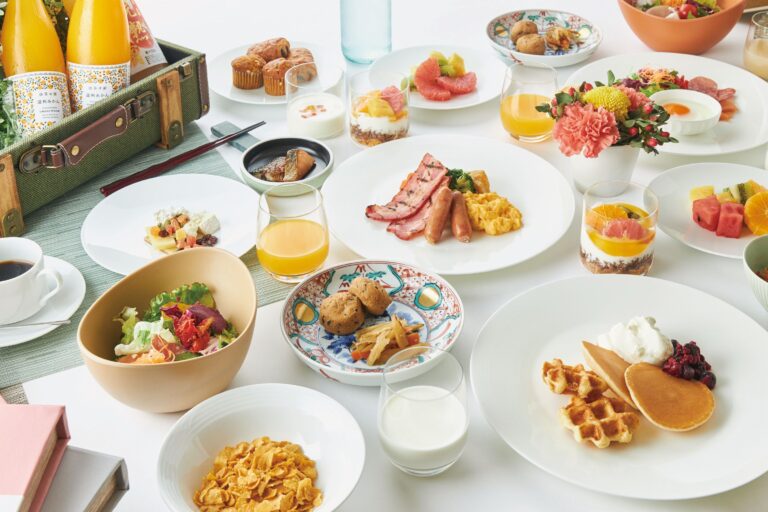The Animal Rights Center’s goal is to improve animal welfare.
We’re starting to see some companies and producers who are implementing good practice in Japan.
However, animal abuse is so common as though it cancels out all these good deeds.
This is a challenge in Japan.
It exemplifies a bad custom described in a Japanese proverb “to cover up things that smell bad (sweep trouble under the rug).”
The below shows cases of animal abuse that are even beyond animal welfare in Japan.
The horrifying fact is that these are not what only bad companies practice, but rather they are common practice, and the legislation also is sometimes aware of these, although they do not acknowledge them as problems.
Moreover, this violence and animal abuse is not regulated at all in Japan.
1. Animals cannot drink water
50.4% of cow slaughterhouses in Japan do not provide cows with water. Neither do 86.4% of pig slaughterhouses.[ Survey done by Meat Hygiene Inspection in 2011]
Most of them say “the shower they use to rinse off is also water to drink,” which is contaminated with urine and feces.
Animals get rinsed off as soon as they arrive or just before they get slaughtered. So they drink urine or suffer from thirst meanwhile.
They are not able to drink water about 24 hours after arriving at slaughterhouses.
If we include hours of transportation, it is even longer than 24 hours.

2. Animals’ necks are cut while they are conscious
Most chicken slaughterhouses cut chicken’s necks while they are conscious. Slaughtering by just cutting artery prolongs death.
Please see the detail here.

3. Animals get boiled while they are conscious
Errors are common when slaughtering chickens in Japan.
Annually, they fail 500,000 chickens when their necks get cut. Then, chickens are boiled alive dying of agony and suffering.
The skin turns in red, and you can see their legs flapping when they touch the boiling water.
See details here.
4. Abandoned while eating alive
Chickens are abandoned for a long time. There are often no people attending.
While waiting, they are confined in containers, and wild animals attack them while there is no way out for the chickens.
It happens daily, it is witnessed, and yet, there is no improvement.

5. Inconceivable methods to kill
There are inconceivable methods practiced in Japan, including the case where chickens are burned alive to which the Animal Rights Center reported the police in 2016.
The practices include beating, burning, suffocating in plastic bags, drowning, abandoning, weakening, starving to death.
The animals are sometimes even passed onto waste disposers while being alive, which means crushing, starving, or suffocating to death.
If animals don’t die during transportation, they get run over by machines.

6. It is acceptable to use electric shock too often
Transporters and staff at slaughterhouses use electric stunning guns very often. They persistently press the gun onto animals.
They don’t even seek for alternative methods.

7. “No food or water method” is still practiced
5% of hen houses still use “no food or water” method in Japan.
Many chickens would die if they stopped eating, but not only do they stop feeding food but also water is cut off.
Even “no food method” is regarded as cruel. “No food or water” is the worst animal abuse.

8. Long hours of abandonment for chicken hens
Chicken hens are treated like garbage on their last day.
They are abandoned from day before to the next morning they get slaughtered after long hours of transportation.
This happens every day.
Chickens are not able to move. Their bones may be broken, dislocated, or ripped apart when they are thrown to the containers.
They are piled up, including dead birds, and they get wet with feces or broken eggs coming from the birds above them.
In summer, there are maggots in eggs or feces.
They get the same treatment in winter, too.
This is hell.
See details here.

9:暴力に気が付かない
9. They are not aware of their own violence
People involved in agriculture businesses say “These animals don’t feel pain.”
You hear all kinds of excuse, such as
“It is fine to kick or punch,”
“they don’t feel pain,”
“they scream but it’s just exaggerating,”
“they don’t feel pain even when they don’t get killed.”
These are not proven at all. In fact, science has shown that animals do feel pain, fear, and get stressed.
10. The law is not functioning
The most hopeless thing is this.
There is indeed a law called “Act on Welfare and Management of Animals,” which is supposed to prevent animal abuse from happening. And yet, it is not working at all.
The parties involved don’t even warn against the abuse by making excuse such as “we have no authority over agriculture business,” “we are not allowed to break in,” or “it’s beyond our jurisdiction.”
The legislation itself turns a blind eye to abuse.
Most agriculture businesses are not even aware of this act.
This act gets revised every 5 years but the discussion on revision always ignores agriculture.
There is no clause about livestock animals whatsoever in the act despite the fact there are more animals in agriculture than any other fields in Japan.
What’s most cruel is the fact that there is ongoing abuse, which many people think is horrible and can’t even look at, and yet, it can’t be regulated or improved.
Translations:Seika K


